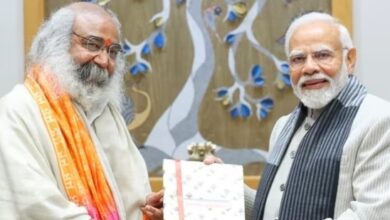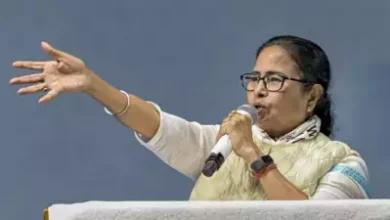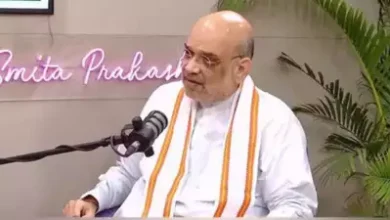Views: Will Congress Benefit From Another Bharat Jodo Yatra in 2024?
The opposition is furious after receiving invitations to the dedication of the Ram Temple in Ayodhya. Naturally, the Left parties have expressed their opposition to the event. Akhilesh Yadav, Uddhav Thackrey, Mamata Banerjee, and Sharad Pawar have all expressed their concerns. The comment from foreign Congress head Sam Pitroda, who is regarded as Rahul Gandhi’s mentor, from Chicago indicates the party’s predicament, even if the Congress has not yet revealed its position.

The Hindutva wave that occurred on January 22 during the opening of the Ram temple in Ayodhya won’t be the only one. On November 9, 2019, the Ayodhya ruling was rendered, allowing for the building of the temple. During his tour to the United Arab Emirates in July of that year, Prime Minister Narendra Modi was able to convince the ruler of Abu Dhabi to provide the Swaminarayan cult 17 acres of land for a Hindu temple in Arabia. This temple will also be opened in the middle of February in Modi’s presence at a “Festival of Harmony.” 3.5 million Indians live in the United Arab Emirates.
There was no Jana Sangh or BJP in 1949 when the Ayodhya conflict intensified due to the unexpected presence of a god at the location (Jana Sangh was created in 1951). In an assembly by-election in Faizabad (which became Ayodhya in 2018), the Congress fielded a seer, Baba Raghav Das, who, during a campaign marked by sectarian hostility, beat socialist mainstay Acharya Narendra Dev.
Soon after, the location became contentious, and a lock was placed on the property, which had just been unsealed in February 1986—during the Rajiv Gandhi administration—by a court decision. Union ministers’ attendance and Doordarshan’s live broadcast of the lock opening suggested that the event was orchestrated by the government. Under the dictates of the Congress government, the temple’s Shilanyas (foundation stone laying) was completed on election eve in 1989.
Even while the Congress would choose to distance itself from Ayodhya in 2024, the party’s wavering cannot be overshadowed by Sam Pitroda’s wham from Chicago. The BJP hasn’t wavered in its position. It will be fascinating to see if or not the leaders of Congress who were invited to the event decide to go.
There are other agenda items that the BJP is aligning its 2024 approach with. Targeting the ‘labharthis’, or recipients of government programs, is a serious endeavor.
It is incumbent upon the opposition to seek to unseat the current administration as election season approaches. The 28 non-BJP parties gathered behind the INDIA bloc platform are hopeful that, similar to the 2004 failure of Atal Bihari Vajpayee’s “India Shining” campaign, the BJP would be unable to pass the halfway point in 2024, leaving open the prospect of coalition politics making a comeback.
With 145 seats to the BJP’s 138 in 2004, the Congress managed to put together a loose coalition and create a government led by Dr. Mammohan Singh, which was overseen remotely by the National Advisory Committee (NAC), which is chaired by Sonia Gandhi. While the election results only gave the Congress a chance to rule, they were viewed by the Congress as a “mandate.” A decade later, policy stagnation or a governance deficiency constituted the regime’s low point.
2024 is not 2004. Now that it lacks a majority in the Lok Sabha, the BJP is not asking for a mandate. In both 2014 and 2019, the BJP secured a resounding majority because to Narendra Modi’s charm and Amit Shah’s masterful handling of the elections. Unlike other parties’ election preparations, which start only before elections, the well-oiled machinery operates around the clock, all year long. The opposition, bogged down in contradictions, is up against the BJP’s well-defined agenda.
The BJP has been focusing on spreading its message through the Viksit Bharat Sankalp Yatra (BVSY) vans that have been crisscrossing the countryside since mid-November with the message of the government’s welfare schemes, while the INDIA parties congregate, lacking an agenda and on the single plank that Modi must go. The members of the BJP cadre are supporting and overseeing this government initiative. Those who have not yet benefited are recognized and added to the list of beneficiaries (labharthis) as the vans go.
Throughout the nation, Modi has often engaged with the labharthis that the yatra vans are targeting. Video conferences were used to facilitate interactions on November 30, December 9, 16, and 27. The BJP’s cyber-warriors have broadcast these gatherings on television and are cascading them. He has called the vans “Modi ki guarantee ki gaadi”.
Since the Jana Sangh’s founding in 1952, the BJP headed by Modi has carried out the campaign pledges made by the organisation, including the repeal of Article 370 and the enactment of a Citizenship Act. In 1987, the BJP made the Ram temple a priority in Palampur. The Supreme Court has approved the Article 370 ruling. The Supreme Court’s resolution of the Ayodhya controversy, which started in 1858 and became more intense in 1949, allowed the temple to be built. States under BJP leadership, such as Uttarakhand, have started laying the foundation for a Uniform Civil Code (UCC).
Well-organized mass movements have often resulted in the fall of governments. The opposition’s unanimity and the Congress defeat in 1977 were made possible by the JP movement of 1974. Rajiv Gandhi was overthrown in 1989 by VP Singh’s public mobilization and the Bofors propaganda that began in 1987. The Aam Aadmi Party was founded in 2011 as a result of the Anna Hazare-led anti-corruption campaign, which also created the conditions for the BJP to unseat Manmohan Singh in 2014.
There isn’t a widespread mobilization happening right now. 146 MPs were suspended at the most recent session of parliament, and the Indian parties vowed to take massive action. All that happened was a single-day coordinated demonstration at Jantar Mantar in New Delhi. The MPs from these parties demonstrated their displeasure by walking 200 meters down Vijay Chowk during the previous session. The opposition has not mobilized in large numbers; instead, their anti-Modi demonstrations have been defined by banners and rallies held within the safe boundaries of Lutyen’s Delhi.
Now, as the Bharat Jodo Yatra 2.0, Rahul Gandhi will set out on his Bharat Nyay Yatra. It is said that the Congress won Karnataka and Telangana during his prior yatra. Rajasthan, Madhya Pradesh, and Chhattisgarh have all been visited by the yatra.
In order to address its financial crisis, the Congress is, on the one hand, looking to crowdsourcing. Conversely, an opulent bus tour that travels across 14 states is being introduced. A political party sets aside funds specifically for candidate financing during an election year.
There seems to be an imbalance in the priorities of the Congress not just in terms of strategy but also in the use of resources. Given that Mallikarjun Kharge, not Rahul Gandhi, emerged as the focal point of the most recent INDIA conclave, the reaction of INDIA’s allies to Rahul Gandhi’s yatra would be significant.
Together with Sam Pitroda’s efforts, the Nyay Yatra may help Rahul Gandhi’s brand when he speaks to audiences overseas. Will it, however, aid in reestablishing the Congress brand?







